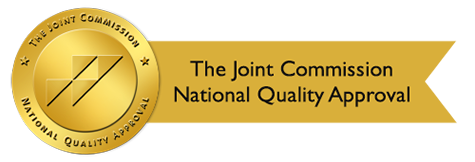Back in 2016, the Centers for Disease Control and Prevention (CDC) issued new guidelines for opioid prescribing. Aimed at mitigating risk, the recommendations sought to lessen the volumes of opioid prescriptions, thus reducing the incidence of opioid-related overdose and death.
With more than 115 deaths attributable to opioid overdose every single day, something had to give. However, the response has left many people wondering just how far things have to go before the remedy becomes more deadly than the underlying cause.
Are judges and insurers qualified to dictate medical treatment?
Though the guidelines were meant for doctors, they have influenced state regulators, disability administrators, and insurers, prompting them to start making some pretty tough across-the-board decisions that have had a significant impact on a very vulnerable population.
Many people who suffer from chronic pain and other debilitating conditions have since been denied access to these medications, and in some cases, this means losing the ability to cope with the daily tasks of living that most of us take for granted.
In one example, a man who had worked 25 years for GM was forced to retire early because of a back injury. His surgery failed—a not-uncommon occurrence—and subsequent therapies only worked for a short time or not at all. The pain medication he was prescribed worked consistently, allowing him to lead a relatively normal life, but a judge who was reviewing his workers’ compensation disability case decided that his medications should be reduced to an extreme degree.
Now barely able to walk or leave his home because of his reduced mobility and pain, this man’s life as an independent human being is in peril. His doctors, fearing that they will lose their license or ability to prescribe, will not intervene.
Unfortunately, his story is not unique.
“What we meant to say is …”
In June of 2019, the CDC clarified its position on opioid prescribing, recognizing that some physicians had misinterpreted the guidelines and had taken the recommendations too far. They iterated that patients undergoing cancer treatments or having pain following surgery should not be affected by the 2016 guidelines because such conditions fell outside the scope of the report.
They said that if doctors were to set hard limits on opioid prescribing that they were not applying the guidelines as they were intended. These guidelines, they stated, were meant to focus on primary care physicians who were treating patients with chronic pain.
So, what were their recommendations? It was suggested that:
- Doctors should prescribe the lowest possible dosage of pain medication in every situation.
- Avoid prescribing more than the equivalent of 90 “morphine equivalent units” per day.
- If the dose was raised to that level, the rationale must be “carefully justified.”
- Patients at or above that dose should be continued if deemed necessary.
- Doctors should avoid abrupt tapering or discontinuation to prevent pain and psychological distress.
They also allowed as how hard-and-fast policies conflict with the ability to provide individualized assessments of the benefits and risks, given the specific circumstances of each patient.
Doctors sanctioned, patients at risk
Following the release of the 2016 report, many doctors were disciplined. Clinics and practices were forced to close, leaving a large number of pain sufferers out of options.
Though the guidelines have been revised, it has not helped those doctors who faced action during the crackdown. Some have even served jail time, arguably, just for doing their job.
The general consensus is that there is a lack of innovation in pain medication, and methods do not exist that will accurately quantify pain. This is a significant barrier in bringing new solutions to the table, and there is still a lot at stake.

Chronic pain is not a crime
While doctors have been let off the hook following the CDC’s 2019 review, chronic pain patients continue to feel the pinch.
When state regulators make decisions that affect how doctors can proceed, there is a ripple effect that is driving more profound disabilities in some chronic pain patients.
For instance, if an individual who suffers from chronic pain is on disability or workers compensation, they are subject to the decisions of an adjudicator. For non-acute pain, it is easy for such decision-makers to conclude that a long-standing prescription is no longer necessary because there has been little or no improvement in the patient’s condition.
Weighing the risks against the benefits, the conclusion is often that the medication should be drastically reduced, resulting in reduced mobility, increased pain, and ultimately, a significant decrease in the quality of life.
The state’s role in the war on pain
Across the nation, 33 states have responded to the opioid crisis by passing laws that limit opioid prescribing. In some cases, this means that doctors are limited to a three-day, five-day, or a seven-day supply. In Florida, physicians are required to register their practice as a “chronic pain clinic” to be able to prescribe more than a three-day supply of opioids.
Though the federal guidelines have been revised, doctors continue to fear disciplinary action at the state level, and many will refuse to treat or will drop patients with chronic pain; patients who now crowd the lobbies of pain clinics looking for relief.
Why adequate pain management matters
It is impossible to generalize chronic pain. Each patient’s experience is vastly different from the next, and if doctors aren’t part of the solution, they are part of the problem.
New approaches often delay adequate pain management, but they are aimed at developing a better understanding of what works well for the individual patient as opposed to applying a standardized solution. In other words, pain doctors are taking a more comprehensive and systematic approach, trying alternative therapies like physical therapy, acupuncture, injections, cognitive behavioral therapy (CBT), and psychological counseling to shape the course of ongoing treatment.

Reducing the risk
When patients can self-manage their pain, either through behavioral modification, pacing, modified activities, or a combination of several modalities, it eases the burden, both on the medical system, and on the patient’s own health and potential for optimized wellbeing.
If pain can be managed in ways that either do not include opioids or if a combination of therapies result in decreased reliance on opioids, the risk to the patient is reduced, as is the potential for dependence and abuse.
The ultimate goal, no matter what treatments are prescribed, is to improve the patient’s quality of life, to support their independence, and help them maintain their productivity. In many cases, if their pain is well-managed, these patients won’t be forced to give up their jobs or the things they love to do. It helps them stay off of benefits and continue as a contributing member of society, and even if they do experience pain episodes that prompt them to intervene with opioid pain medications, the reliance on them is significantly reduced.
Many doctors, however, still need to be educated about pain and addiction. While most stakeholders can agree that regulators had to do something to address the opioid crisis—deemed the biggest public health crisis in history—a balance still needs to be struck between over and under-prescribing. At its core are a lot of good people in unfortunate circumstances, and they deserve a chance to live life to its fullest, just as much as anybody else.
If you or someone you know is struggling with drug addiction in Long Beach due o chronic pain, don’t hesitate to seek help. Rehab and detox facilities like Roots Through Recovery have programs that can help you combat addiction as well as any co-occurring conditions. Roots Through Recovery facility in Long Beach is easily accessible via South Bay, Catalina Island, and Orange County. Visit 3939 Atlantic Ave, Suite 102 Long Beach, CA 90807 or call (866) 766-8776.



